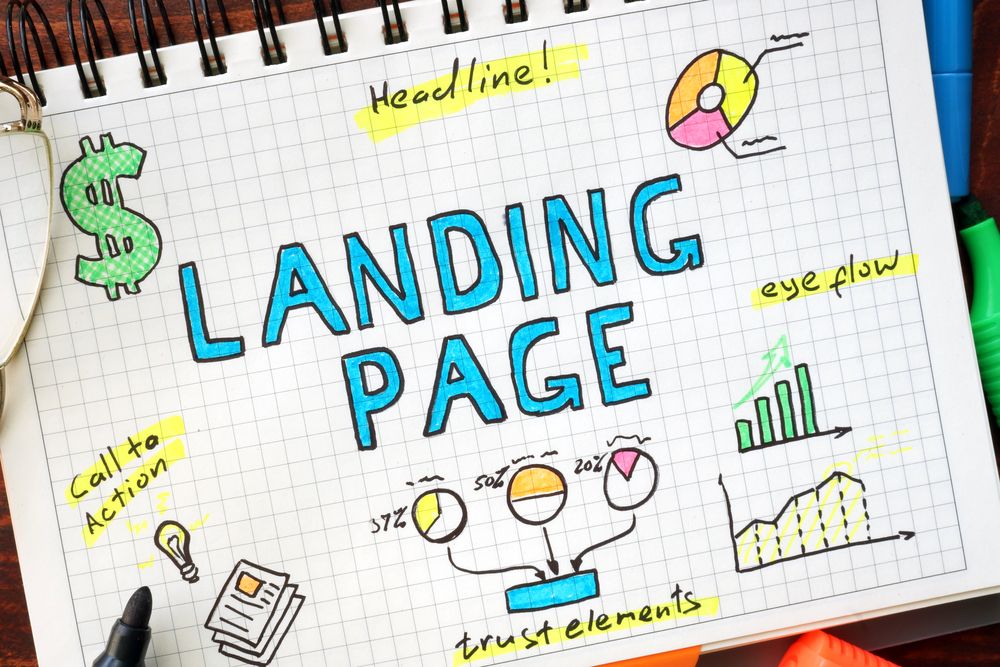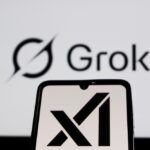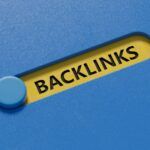
What is an SEO landing page? It’s a specialized web page designed not just to attract visitors from a search engine but to convert them. Think of it as your website’s most persuasive salesperson, working 24/7 to draw in organic traffic and turn interest into action.
An SEO landing page is a standalone page on your specific website created to rank highly for targeted search queries. Its primary goal is to capture traffic from search engine result pages and guide users towards a single, focused objective. This is different from a homepage, which serves a broader, more navigational purpose.
These pages balance the technical requirements of search engine optimization with the psychological needs of the user. The ultimate aim is to create a seamless user experience that satisfies the user’s search query and encourages a high conversion rate. Success means you rank higher in search results and see more leads or sales.
The Anatomy of an SEO-Friendly Landing Page
So what makes a landing page SEO-friendly? It is a combination of several critical components working together to satisfy both search engines and users. Let’s break down the essential elements.
1. Sharp Keyword Focus
Every effective SEO landing page is built around a primary keyword. This is the main search term you want to rank for. This target keyword should be strategically placed in the title tag, headers, and content to signal relevance to the search engine.
Beyond the primary keyword, you should also include secondary keywords and semantic keywords. These related terms help search engines understand the context and depth of your content. For example, if your primary keyword is “best running shoes,” secondary keywords might include “long-distance running shoes” or “trail running sneakers.”
2. Compelling Headlines & Title Tag
Your headline, or H1 tag, is often the first thing a visitor reads. It must grab their attention and confirm they are in the right place. A great headline incorporates your target keyword and communicates a clear benefit.
Equally important is the title tag, which appears in the browser tab and on the search engine result page. The title tag is a major ranking factor and heavily influences click-through rates. It needs to be concise, descriptive, and include your primary keyword, ideally near the beginning.
3. Engaging and Valuable Content
The content is the core of your SEO landing page. It must thoroughly address the search intent behind the user’s search query. Your goal is to provide the best, most comprehensive answer available for that query.
Structure your content with clear headings, short paragraphs, and bullet points to make it easy to scan. Use images and videos to break up text and increase engagement, but be sure to optimize them with descriptive alt text. This not only helps with accessibility but also gives search engines more context about your page.
4. A Clear Call-to-Action (CTA)
An SEO landing page is incomplete without a clear CTA. This is the action you want the user to take, such as making a purchase, signing up for a free trial, or downloading a resource. The CTA should be visually distinct and use action-oriented language.
Your CTA is the bridge between attracting organic traffic and achieving your business goals. Without a compelling CTA, even a page that ranks highly will fail to generate leads or sales. Make it obvious what you want users to do next.
5. Fast Loading Speed
Page speed is a critical ranking factor and a cornerstone of a good user experience. A slow-loading page frustrates users, leading to higher bounce rates, and can negatively impact your ability to rank high. People expect pages to load almost instantly.
To improve loading speed, optimize image file sizes, leverage browser caching, and minify your site’s code. A faster page not only pleases Google searches but also improves conversion rates. Users are more likely to convert on a page that responds quickly.
6. Mobile-Friendly Design
With Google’s mobile-first indexing, having a mobile-friendly page is non-negotiable. Your SEO landing page must provide a seamless experience on all devices, from desktops to smartphones. This means using a responsive design that automatically adapts to different screen sizes.
A poor mobile experience will deter a significant portion of your audience and hurt your search rankings. Test your page on various devices to confirm that text is readable, buttons are tappable, and navigation is intuitive. Good design is a key part of good SEO.
SEO Landing Pages vs. PPC Landing Pages
While they might seem similar, SEO landing pages and PPC landing pages are designed for different marketing channels and have distinct characteristics. A PPC landing page is built specifically for paid search campaigns, like those on Google Ads. An SEO landing page is created for organic traffic.
Understanding the difference is important for an effective marketing campaign. Using the wrong type of page for your channel can lead to wasted ad spend or poor organic performance. Let’s compare the two.
| Feature | SEO Landing Page | PPC Landing Page |
|---|---|---|
| Primary Goal | Rank high in organic search results and attract sustained traffic. | Achieve a high conversion rate from a specific paid search ad. |
| Traffic Source | Search engines like Google (organic traffic). | Paid search ads (e.g., Google Ads, social media ads). |
| Content Focus | Comprehensive, in-depth content that fully answers a search query. Often includes internal links to other site pages. | Highly focused, concise copy with a single, clear call-to-action. Often removes site navigation to reduce distractions. |
| Timeframe | Long-term strategy; can take months to rank and build traffic. | Short-term, immediate results tied directly to an active marketing campaign. |
| Keywords | Targets a cluster of related keywords, including long-tail and semantic keywords, to establish topical authority. | Targets very specific, often transactional keywords that match the ad group. |
| Links | Includes internal links to build site authority and external links to credible sources. | Minimal or no external or internal links to keep the user focused on converting. |
In essence, an SEO landing page is a content-rich resource aiming for long-term visibility. A PPC landing page is a lean, conversion-focused machine built for immediate action. Both are valuable tools, but they serve different purposes in your digital strategy.
Why SEO Landing Pages Are Crucial for Your Business
You might wonder if optimizing your homepage is enough. While your homepage is important, dedicated SEO landing pages are vital for capturing targeted traffic. They are a cornerstone of effective search engine optimization.
Attract High-Quality Traffic
SEO landing pages allow you to create highly focused content that aligns with specific search phrases. This means the organic traffic you attract is more qualified. These visitors are actively looking for the solutions you offer, making them more likely to convert.
Achieve Higher Conversion Rates
Because these pages are tailored to a specific user’s search query, they provide an excellent user experience. They directly address the user’s needs without the distractions of a general website page. This focus naturally leads to higher conversion rates.
Improve Your Search Rankings
By creating pages that are highly relevant to specific keywords, you signal to search engines that you are an authority on that topic. Well-optimized pages that satisfy user intent are more likely to rank highly for those terms. This builds your site’s overall authority and can lead to a significant increase in organic traffic over time.
Gain Measurable Insights
Tracking the performance of a specific SEO landing page is straightforward. You can analyze metrics like organic traffic, bounce rate, time on page, and conversion rate. This data allows you to understand what works and refine your SEO optimization strategy for even better results.
How to Create a Powerful SEO Landing Page
Ready to build your own SEO-friendly landing page? Following a structured process will help you create a page that ranks well and converts. Here’s a step-by-step guide to get you started.
1. Conduct In-Depth Keyword Research
Start by identifying the keywords your target audience is using. Use tools to analyze search volume, keyword difficulty, and relevance. For small businesses, focusing on long-tail keywords with clear transactional intent can be an effective way to gain traction.
Your research should uncover a primary keyword and several secondary keywords. These will form the foundation of your page’s content. Understanding what keywords transactional users search for is vital for driving sales.
2. Understand and Match Search Intent
The single most important factor for success is matching search intent. A user’s search intent is the “why” behind their search query. Are they looking for information, comparing options, or ready to make a purchase?
A search intent search can generally be categorized into four types.
- Informational: The user wants to learn something (e.g., “what is on-page SEO”).
- Navigational: The user is trying to find a specific website (e.g., “HubSpot login”).
- Commercial Investigation: The user is comparing options before a purchase (e.g., “best SEO landing pages”).
- Transactional: The user is ready to buy (e.g., “white label SEO services price”).
Your content must directly satisfy the intent search. If someone has transactional intent, your page should make it easy for them to buy. If they are comparing options, provide detailed comparisons and reviews.
3. Write Compelling and Structured Content
Write content that thoroughly answers the user’s search query while naturally incorporating your target keywords. Avoid keyword stuffing at all costs, as it harms user experience and can lead to penalties. Your writing should be clear, engaging, and authoritative.
Use headers (H1, H2, H3) to structure your content and make it scannable. Break up long blocks of text with short paragraphs, lists, and images. Well-structured content is easier for both users and search engines to understand.
4. Master On-Page SEO Elements
Proper on-page SEO is fundamental for any SEO landing page. This involves optimizing various elements on the page itself. Make sure your primary keyword appears in the title tag, meta description, H1 heading, and URL.
Incorporate your keywords throughout the body content, but always prioritize readability. Use internal links to guide users to other relevant pages on your site, which also helps search engines crawl your site more effectively. Don’t forget to add descriptive alt text to all your images.
5. Design for Conversions and User Experience
Your page’s design should guide the user’s eye toward the CTA. Use visual hierarchy, whitespace, and contrasting colors to make the conversion path clear. Remove any unnecessary distractions, such as complex navigation or social media feeds, that might pull the user away from the main objective.
Include trust signals like customer testimonials, security badges, or case studies. These elements build credibility and can significantly improve your conversion rate. A clean design that instills confidence is key.
6. Test, Analyze, and Refine
Your work isn’t done after you hit publish. Continuously monitor your page’s performance using analytics tools. Track metrics like organic traffic, keyword rankings, bounce rate, and conversion rate.
Use this data to identify areas for improvement. You can A/B test different headlines, CTA buttons, and layouts to see what resonates best with your audience. An SEO landing page is a living asset that should be refined over time for higher search performance.
Common SEO Landing Page Mistakes to Avoid
Creating an effective SEO landing page involves avoiding common pitfalls that can undermine your efforts. Even small mistakes can impact your rankings and conversion rates. Here are some critical errors to watch out for.
Focusing on SEO Over User Experience
While the goal is to rank well in search engines, never sacrifice user experience. A page stuffed with keywords but offering little value will have a high bounce rate. Search engines understand user engagement signals, so a page that users love is more likely to rank highly.
Forgetting About Mobile Users
A significant portion of web traffic comes from mobile devices. If your SEO landing page is not optimized for mobile, you are alienating a large segment of your audience. This oversight can cripple your rankings and conversion opportunities.
Allowing Slow Loading Times
Patience is in short supply online. A page that takes more than a few seconds to load will see visitors leave before they even see your content. This not only hurts your chance to convert but also signals to search engines that your page provides a poor experience.
Using Weak or Vague Calls-to-Action
Your CTA must be clear, compelling, and easy to find. Vague CTAs like “Click Here” or “Submit” are far less effective than specific, benefit-driven ones like “Get Your Free Quote” or “Download the Guide Now.” Don’t make users guess what to do next.
Ignoring Analytics and Performance Data
Launching a page and then forgetting about it is a recipe for failure. Analytics provide the insights you need to understand what’s working and what isn’t. Regularly review your data to make informed decisions and continuously improve your page’s performance.
Examples of Highly Effective SEO Landing Pages
Looking at successful examples can provide inspiration for your own efforts. Here are a few companies that excel at creating SEO landing pages that drive both traffic and conversions. These are some of the best SEO landing page examples.
Moz’s Beginner’s Guide to SEO
This comprehensive guide is a classic example of an informational SEO landing page. It ranks for countless SEO-related search terms because it provides immense value to users. It naturally incorporates relevant keywords while establishing Moz as an authority in the field.
HubSpot’s Free CRM Page
HubSpot’s page targeting the search “free CRM” is a masterclass in conversion-focused design. It clearly outlines the product’s benefits and features a prominent CTA to get started. The page perfectly matches the transactional intent of the searcher, leading to high sign-up rates.
Airbnb’s Local SEO Location Pages
Airbnb dominates local SEO by creating a unique landing page for virtually every city and neighborhood. These pages target specific search phrases like “apartments in center city Philadelphia” and are filled with relevant local content. This strategy provides a fantastic user experience and helps them rank highly for a massive number of location-based keywords.
So, what is an SEO landing page? It is a dedicated page on your website meticulously built to attract organic traffic and convert visitors. By seamlessly blending search engine optimization techniques with an outstanding user experience, you create a powerful asset for your business.
The key to a successful SEO landing page lies in a delicate balance. You must provide clear signals that help search engines understand your content while delivering real value to your human visitors. It is this synergy that elevates a simple webpage to a high-performing business driver.
By focusing on keyword research, matching user intent, creating valuable content, and optimizing for conversions, you can build landing pages that rank higher and achieve your goals. Start creating your own SEO-friendly landing pages today, and watch your organic traffic and conversion rate climb.












